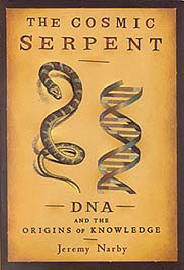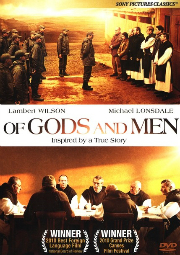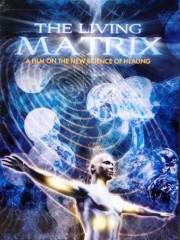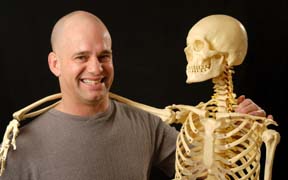There are a handful of Yoga blogs I read when I get the time. J. Brown’s is one of them. He’s pretty open about the path he’s on and I’ve appreciated his matter of fact inquiry of Yoga through the masculine lens. His recent post on patriarchy, hierarchy and culture seems to steer into a realm that is less centered and, frankly, takes too much on.
There were two things that jumped out at me, the vignette regarding his daughter listening to a Taylor Swift song and a comment about Men’s Yoga. This post is a response to Brogis Need to Recognize.
___________________________________
 J. Brown, I don’t know what Taylor Swift song your daughter was listening to. I’m not a fan of Swift’s more recent albums and image, but her early country-pop songs are pro-girl, without demonizing boys or femininity. I had no problem with my daughter listening to songs like Fifteen, Love Story or Picture to Burn. The point I’d like to make is that some of this stuff is innate.
J. Brown, I don’t know what Taylor Swift song your daughter was listening to. I’m not a fan of Swift’s more recent albums and image, but her early country-pop songs are pro-girl, without demonizing boys or femininity. I had no problem with my daughter listening to songs like Fifteen, Love Story or Picture to Burn. The point I’d like to make is that some of this stuff is innate.
Have you ever heard old hippies talk about how they kept the TV out of the house, would not buy their boys cap guns, etc., only to watch them pick up a stick, aim it at their playmate and go “bang!”? I haven’t had cable since my daughter was born, the Barbie doll she was given quietly disappeared and she didn’t get any of the teen or preteen glam magazines; but suddenly when she turned 14 she got a hair straightener, started wearing makeup and cutting her jeans into Daisy Duke shorts.
My ex commented recently how our kid has a friend who is pretty competitive and judgmental looks-wise. After she brought this to my attention, sure enough, the next time that friend was over I observed her scan my daughter head-to-toe with a flat judgmental expression before her face brightened with a paste on smile and she made a superficial compliment.
My ex doesn’t wear makeup, much to our daughter’s chagrin, and neither of us pay much attention to fashion. Now, you can blame some of her newfound superficiality on culture. But as a man, I’m going to refute that this has anything to do with “the patriarchy” and everything to do with how women are wired.
You read Amanda Green’s awesome blog, don’t you? She had a great post recently where she owned this feminine behavior more completely than I’ve seen before. In gearing up to meet a girlfriend that she had a disagreement with:
Instead of my comfy worn-in jeans and fluorescent sparkly green belt, I chose the tight dark denim jeans and a belt of tooled leather. And instead of my super soft sweatshirt from the music festival that is my Sunday uniform, I wore my sergeant pepper jacket. I wore cowboy boots to make me taller and I put on bracelets and mascara. It felt shitty and necessary all at the same time.
Neither the patriarchy or men are to blame for this. So I suggest you stop taking it on.
Finally, J Brown: There is a lot of conversation in the yoga world these days about the “yoga body” and the empowerment of women through yoga. And then there is a backlash of “Broga” classes being marketed where men can be men and do their yoga without having all those empowered women around.
I think you’re totally wrong on this. I’ll frame my argument like this: we have Title IX, written largely to ensure that girls have the opportunity to play sports, which is great. But notice how there isn’t a public outcry trying to get boys into say ballet or drama. Mind you, I’m not suggesting that our culture is failing our boys because of this.
Rather here we have yoga, where in its modern presentation is quite female centric, and when men start to carve out a niche where they can explore it, it’s criticized? It’s laughable to suggest that Broga or Men’s Yoga classes are a backlash to empowered women.
 I teach men’s classes for a variety of reasons. Mostly because the presentation is overtly feminine in so many classes that I want to step outside that arena to provide a safe space for guys to experience this practice. Did I just use the term “safe space”? Yes I did and I use it tongue-in-cheek. I’m not blaming anyone, and I really don’t want female instructors to change their presentation but a lot of how Yoga is taught just doesn’t work for me.
I teach men’s classes for a variety of reasons. Mostly because the presentation is overtly feminine in so many classes that I want to step outside that arena to provide a safe space for guys to experience this practice. Did I just use the term “safe space”? Yes I did and I use it tongue-in-cheek. I’m not blaming anyone, and I really don’t want female instructors to change their presentation but a lot of how Yoga is taught just doesn’t work for me.
The choice of poses often aren’t that attainable or interesting for many men, the flowery metaphors women frequently use just miss, and the form-fitting clothes are a distraction (I’ll admit it, if no one else will). More importantly, I feel that men need to build their emotional and spiritual capacities from within the masculine, and not depend on the women in their lives for all their emotional needs; from expression to simple acknowledgement to identifying what’s going on.
These reasons have nothing to do with being uncomfortable with empowered women, and everything to do with empowering men to be comfortable in their own skin.
 Osteoporosis is a condition characterized by a decrease in the density of bone, decreasing its strength and resulting in fragile bones. This can lead to fractures and breaks as we age.
Osteoporosis is a condition characterized by a decrease in the density of bone, decreasing its strength and resulting in fragile bones. This can lead to fractures and breaks as we age.






 Of Gods and Men
Of Gods and Men
 How do you know Yoga is working?
How do you know Yoga is working? A recent article in the
A recent article in the  Toltec Traditions
Toltec Traditions